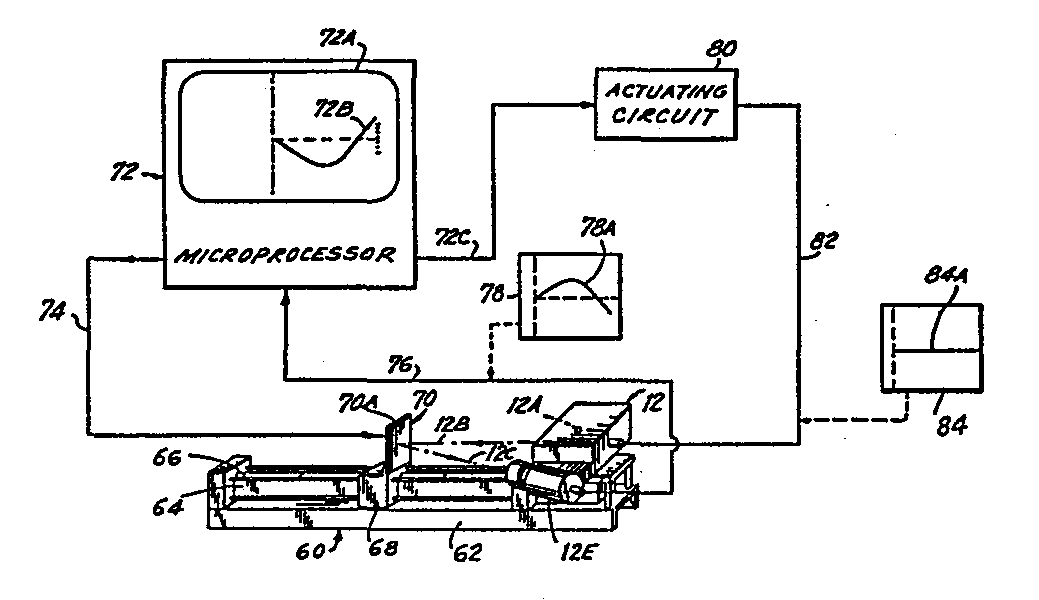(57) Apparatus for measuring a dimension associated with a remote object without contacting
the object itself uses a beam of light which is directed at a surface of the object
and a reflected portion of the beam is detected at a photodetector element. The particular
dimension of the object is determined mathematically by measuring the distance by
which the reflected light signal is offset from a predetermined point on the photodetector
which is aligned with a reference plane at the object. By the use of two heads and
respective light beams and photodetectors, the thickness of a remote object can be
measured.
In order to compensate for the angular relationship between the object's surface and
that of the photodetector, a linearizing calibration circuit is included in which
preset corrections are recorded in programmable memory units. The calibration settings
are determined during manufacture and correct for each normally non-linear reading
at incremental distances within a prescribed measurement range.
To provide the correction signals there are provided means (60) for guiding a simulated
reference surface (70) along a predetermined path. Means (70A, 66) are provided at
the simulated reference surface (70) for establishing its position on the path and
independent light sources (12A) direct light signals (12B) at the simulated reference
surface (70) at each of a plurality of discrete positions along the path. Detectors
(12E) receive reflective components of the light signals on reflection from the simulated
reflection surface (70). Means are provided for measuring the linear accuracy of the
reflected components and for generating a corresponding plurality of compensating
signals (72) with respect to any non-linearity. The compensating signals are stored
in accordance with the discrete positions along the path corresponding to the generation
of a reflected component requiring the compensation signals.
|

|
